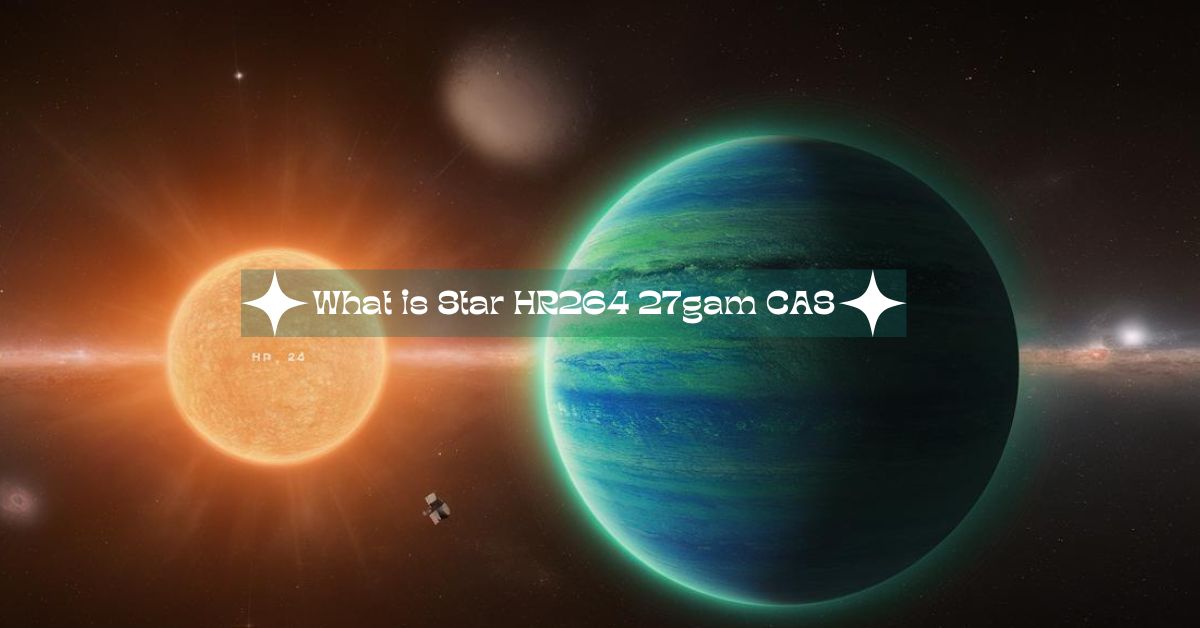What is Star HR264 27gam CAS? A Comprehensive Guide to This Celestial Mystery
what is star hr264 27gam cas is a fascinating celestial object that has captured the attention of astronomers and space enthusiasts alike. In this comprehensive guide, we’ll explore everything you need to know about this intriguing star, from its basic characteristics to its significance in astronomical research. Whether you’re a casual stargazer or a budding astrophysicist, this article will provide valuable insights into the nature of Star HR264 27gam CAS and its place in our vast universe.
Understanding what is star hr264 27gam cas
Star HR264 27gam CAS is a stellar object located in the constellation Cassiopeia. Its unique designation comes from several catalogs and naming conventions used in astronomy. Let’s break down its name to better understand its origins:
- HR264: This refers to the star’s number in the Harvard Revised Photometry Catalogue, a comprehensive list of bright stars.
- 27: This number indicates its position in the constellation Cassiopeia.
- gam: This is short for “gamma,” denoting it as the third brightest star in its constellation according to Bayer designation.
- CAS: This is the standard three-letter abbreviation for the constellation Cassiopeia.
Basic Characteristics of Star HR264 27gam CAS
To truly appreciate Star HR264 27gam CAS, we need to examine its fundamental properties:
- Spectral Type: Star HR264 27gam CAS is classified as a B-type main sequence star. This means it’s a hot, blue-white star that’s still in the prime of its life, fusing hydrogen into helium in its core.
- Luminosity: As a B-type star, HR264 27gam CAS is much brighter than our Sun. It shines with a luminosity several thousand times greater than our home star.
- Temperature: The surface temperature of Star HR264 27gam CAS is estimated to be around 20,000 to 30,000 Kelvin, making it much hotter than the Sun’s 5,778 Kelvin.
- Mass: B-type stars like HR264 27gam CAS are typically 2 to 16 times more massive than the Sun.
- Age: While exact figures are difficult to determine, B-type stars like HR264 27gam CAS are generally young in astronomical terms, often less than 100 million years old.
Location and Distance
Star HR264 27gam CAS is located in the constellation Cassiopeia, a prominent W-shaped constellation visible in the northern hemisphere. Cassiopeia is circumpolar for many northern observers, meaning it never sets below the horizon and can be seen year-round.
The exact distance to Star HR264 27gam CAS is challenging to measure precisely, but modern astronomical techniques have provided increasingly accurate estimates. Current data suggests it’s roughly 200 to 300 light-years from Earth. This means that when we observe HR264 27gam CAS, we’re seeing light that left the star two to three centuries ago!
The Significance of Star HR264 27gam CAS in Astronomy
While Star HR264 27gam CAS might not be as famous as some other stars, it plays a crucial role in several areas of astronomical research:
- Stellar Evolution Studies: As a B-type main sequence star, HR264 27gam CAS provides valuable data for understanding the life cycles of massive stars.
- Galactic Structure: The position and motion of stars like HR264 27gam CAS help astronomers map the structure and dynamics of our Milky Way galaxy.
- Stellar Populations: By studying stars like HR264 27gam CAS, scientists can better understand the distribution and characteristics of different types of stars in our galaxy.
- Astronomical Navigation: Bright stars like HR264 27gam CAS serve as important reference points for both celestial navigation and the calibration of astronomical instruments.
Observing Star HR264 27gam CAS
For amateur astronomers, Star HR264 27gam CAS offers an exciting observational target:
- Naked Eye Visibility: Under dark skies, HR264 27gam CAS is visible to the naked eye as part of the Cassiopeia constellation.
- Telescope Observations: With a small telescope, you can observe the star’s blue-white color and compare its brightness to neighboring stars.
- Astrophotography: HR264 27gam CAS can be captured in wide-field images of the Cassiopeia constellation, adding a point of interest to your celestial photographs.
The Role of Star HR264 27gam CAS in Stellar Classification
Star HR264 27gam CAS plays a significant role in our understanding of stellar classification:
- Morgan-Keenan (MK) System: As a B-type star, HR264 27gam CAS helps define the characteristics of this important stellar class in the MK system.
- Hertzsprung-Russell Diagram: The position of HR264 27gam CAS on this fundamental astronomical chart helps illustrate the relationships between stellar luminosity, temperature, and evolutionary stage.
- Spectroscopic Analysis: The spectrum of HR264 27gam CAS provides valuable data for refining our models of stellar atmospheres and elemental abundances.
Star HR264 27gam CAS and Its Stellar Neighborhood
Understanding the environment around Star HR264 27gam CAS offers insights into stellar formation and galactic structure:
- Stellar Associations: HR264 27gam CAS may be part of a loose group of stars that formed together, providing clues about star formation processes.
- Interstellar Medium: The space between HR264 27gam CAS and Earth contains interstellar gas and dust, which can be studied by analyzing how it affects the star’s light.
- Nearby Stars: Comparing HR264 27gam CAS to other stars in its vicinity helps astronomers understand local stellar populations and dynamics.
The Future of Star HR264 27gam CAS
While stars may seem eternal on human timescales, they too have life cycles. What does the future hold for Star HR264 27gam CAS?
- Main Sequence Lifetime: As a B-type star, HR264 27gam CAS will continue fusing hydrogen in its core for several tens of millions of years.
- Post-Main Sequence Evolution: Once it exhausts its core hydrogen, HR264 27gam CAS will expand into a red giant, dramatically increasing in size and luminosity.
- Final Stages: Given its mass, HR264 27gam CAS will likely end its life as a supernova, enriching the surrounding space with heavy elements.
Star HR264 27gam CAS in Cultural and Historical Context
While not as prominent in mythology as some other stars, HR264 27gam CAS has still played a role in human culture:
- Navigation: As part of the easily recognizable Cassiopeia constellation, HR264 27gam CAS has aided sailors and travelers for centuries.
- Mythology: The constellation Cassiopeia, which includes HR264 27gam CAS, is associated with the vain queen Cassiopeia in Greek mythology.
- Modern Culture: While not often referenced directly, stars like HR264 27gam CAS inspire countless works of science fiction and fuel our collective imagination about space exploration.
Advanced Research Involving Star HR264 27gam CAS
Star HR264 27gam CAS continues to be a subject of interest in cutting-edge astronomical research:
- Asteroseismology: Scientists study the subtle pulsations of stars like HR264 27gam CAS to understand their internal structure.
- Exoplanet Searches: While no planets have been confirmed around HR264 27gam CAS, it’s part of ongoing surveys for exoplanets around various types of stars.
- Stellar Magnetic Fields: B-type stars like HR264 27gam CAS often have strong magnetic fields, which are the subject of ongoing research into stellar physics.
The Importance of Star HR264 27gam CAS in Astronomical Catalogs
Star HR264 27gam CAS appears in several important astronomical catalogs, each serving different purposes:
- Henry Draper Catalogue: This catalog provides spectroscopic data for hundreds of thousands of stars, including HR264 27gam CAS.
- Hipparcos Catalogue: This space-based catalog provides highly precise positional and motion data for HR264 27gam CAS and many other stars.
- Bright Star Catalogue: As a relatively bright star, HR264 27gam CAS is included in this comprehensive list of the brightest stars visible from Earth.
Star HR264 27gam CAS and the Search for Extraterrestrial Intelligence (SETI)
While there’s no evidence of intelligent life around Star HR264 27gam CAS, it falls within the scope of SETI efforts:
- Target for Radio Searches: As a relatively nearby star, HR264 27gam CAS has likely been included in broad surveys for artificial radio signals.
- Optical SETI: Some projects search for brief, powerful laser pulses that could indicate technological activity. Stars like HR264 27gam CAS are potential targets for such searches.
- Hypothetical Habitable Zones: While B-type stars like HR264 27gam CAS are not considered ideal for life as we know it, studying them helps refine our understanding of planetary habitability.
Conclusion
Star HR264 27gam CAS, while perhaps not as famous as some other celestial objects, is a fascinating subject of study that exemplifies the wonders of our universe. From its role in stellar classification to its potential for future discoveries, this star continues to captivate astronomers and space enthusiasts alike. As our understanding of the cosmos grows, stars like HR264 27gam CAS serve as crucial data points in our quest to unravel the mysteries of the universe.
Whether you’re gazing at the night sky, pondering the nature of stars, or diving deep into astronomical research, Star HR264 27gam CAS offers a window into the incredible complexity and beauty of our cosmic neighborhood. Its study not only advances our scientific knowledge but also reminds us of our place in the vast tapestry of the universe.
FAQs About Star HR264 27gam CAS
Can I see Star HR264 27gam CAS with the naked eye?
Yes, under dark skies, Star HR264 27gam CAS is visible to the naked eye as part of the Cassiopeia constellation.
How far away is Star HR264 27gam CAS?
Current estimates place Star HR264 27gam CAS at approximately 200 to 300 light-years from Earth.
What type of star is HR264 27gam CAS?
HR264 27gam CAS is classified as a B-type main sequence star, which means it’s a hot, blue-white star still in the prime of its life.
How old is Star HR264 27gam CAS?
While exact figures are difficult to determine, B-type stars like HR264 27gam CAS are generally young in astronomical terms, often less than 100 million years old.
Is there any chance of life around Star HR264 27gam CAS?
While not impossible, the conditions around a hot, massive star like HR264 27gam CAS are generally not considered favorable for life as we know it.
How does Star HR264 27gam CAS compare to our Sun?
HR264 27gam CAS is much more massive, hotter, and brighter than our Sun. It shines with a luminosity several thousand times greater than the Sun.
Will Star HR264 27gam CAS ever become a black hole?
Given its estimated mass, it’s more likely that HR264 27gam CAS will end its life as a supernova, rather than becoming a black hole.
Are there any planets around Star HR264 27gam CAS?
As of now, no planets have been confirmed around HR264 27gam CAS, but it’s part of ongoing exoplanet search efforts.
What constellation is Star HR264 27gam CAS in?
Star HR264 27gam CAS is located in the constellation Cassiopeia, known for its distinctive W shape.
How do astronomers study stars like HR264 27gam CAS?
Astronomers use a variety of methods to study stars like HR264 27gam CAS, including spectroscopy, photometry, and astrometry, often using both ground-based and space-based telescopes.






